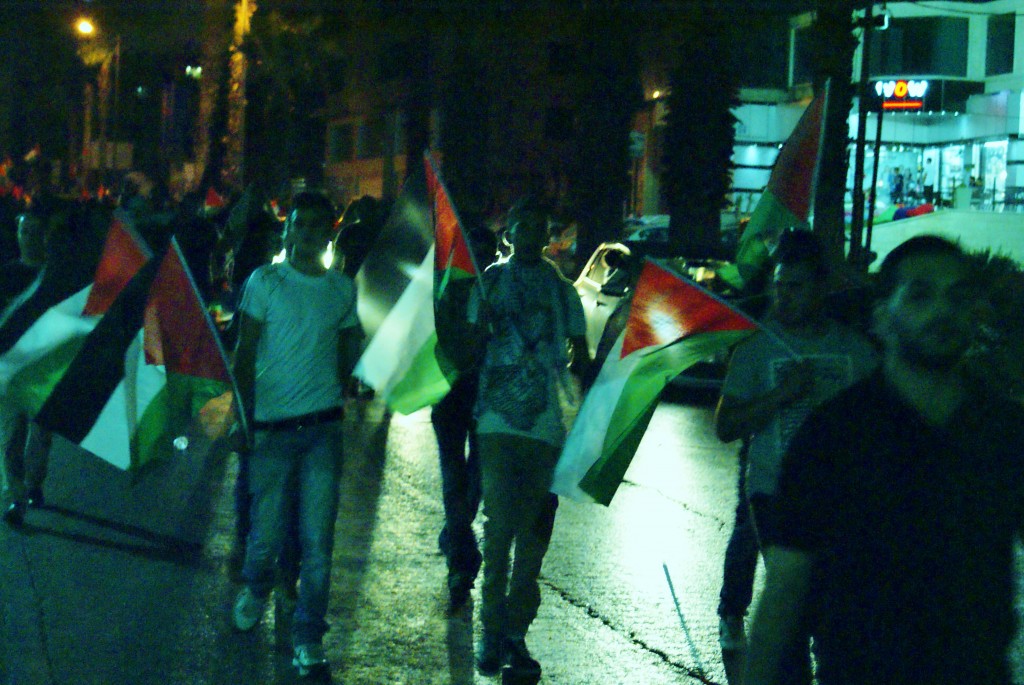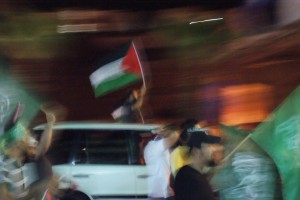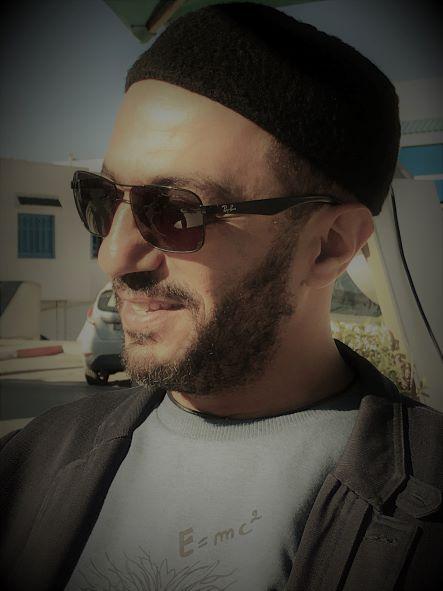Marching for Gaza and towards the third intifada
By Khaled Diab
Does the largest Palestinian protest in recent memory, along with weeks of unrest sparked by Gaza and racist hate crimes, indicate that the long-expected next intifada is here?

Friday 25 July 2014
It was billed as the “march of the 48,000”. Although the actual number was probably lower, with some estimates placing it at over 20,000, it was still the largest protest anyone could remember attending in many long years.
The demonstrators had come out in support of the people of Gaza, who have been under relentless Israeli military assault for the better part of three weeks, leaving at least 789 people dead, some three-quarters of whom have been civilians. The day of the protest also proved to be one of the bloodiest in Gaza, with well over 100 falling prey to the Israeli offensive, including at least 16 taking shelter in an UNRWA school.

Under the slogan “We are all Gaza,” people from all walks of life walked together from the Am'ari refugee camp in Ramallah to the Qalandia checkpoint… and onwards towards Jerusalem, the organisers wished.
Among the crowds were young and old, rich and poor, men and a surprisingly high proportion of women, not just the hip and revolutionary but also the mainstream muhajabat. People chanted slogans and sang songs in support of Gaza, with a small minority even singing about Qassams falling on Tel Aviv.
There was an ocean of Palestinian flags of all sizes being waved by the crowd, in a display of proud national identity targeted most likely at the hated symbol of the occupation towards which they were marching: the infamous Qalandia checkpoint, the barrier keeping Palestinians of the West Bank out of Jerusalem, unless they have a hard-to-come-by permit. There were also a handful of green Hamas flags.

As we neared our destination, it was more like we were approaching the gates of hell. Thick clouds of black smoke were emanating from the area just before the checkpoint, the product it was clear of the dozens of large tyres which had been dropped off a truck as we'd passed earlier towards the starting point.
Like the majority of the crowd, we stopped short of the inferno and did not venture further, though we stayed as close as possible to see what was going on. A different variety of protester was rushing in to this uninviting hellhole: hardcore, young, almost exclusively male (though I thought I glimpsed a woman), faces concealed behind keffiyehs, masks, scarfs or any other improvised facial covering. Young men determined to get to Jerusalem that night.
In addition to the thick smoke, fireworks were being let off by protesters to confuse the riot police who, in turn, were firing flares, pointing menacing-looking and powerful lasers, shooting ample supplies of teargas and, most troublingly of all, they went so far as to shoot live rounds. As we stood there, a constant stream of wounded men was being carried away from the frontline and towards the ambulances.
At first, this was an orderly affair carried out solely by medics. But soon, as the casualties mounted, panicked, shaken young men were carrying out their own fallen, calling out desperately for ambulances and medical attention, which they soon received. We must have seen at least 50 wounded men pass us, including at least one that seemed to have a live-fire wound in his leg. In total, two died and 287 were injured that evening.
With our route to Jerusalem blocked and not wanting nor needing to take the path chosen by these daring and courageous youngsters, we hunted around for an alternative route. My friend, Ibrahim, suggested there must be a way around the clashes through the Qalandia refugee camp.
Finding a way through the warren of alleyways proved a challenge, but the locals were very helpful, from an old man who told us to scale a certain wall to a group of men who scored a lift with an AP cameraman for us. Despite our caution, we still got a couple of personalised teargas canisters shot in our direction when we got out of the car, forcing us to leap, choking into the first available vehicle that could take us to Hizma, and from there back to Jerusalem.
The large number of protesters at this demo, the numerous other protests and clashes going on that night and the following day – not to mention the weeks of unrest we have had since the abduction and murder of three Israeli teens unleashed a wave of hate and crackdowns against Palestinians, culminating in the racist murder of a Palestinian youth – could be an indication that the long-expected third intifada is final here.



Pingback: Marching Toward Gaza & a Third Intifada: A First-Hand Account » Muftah